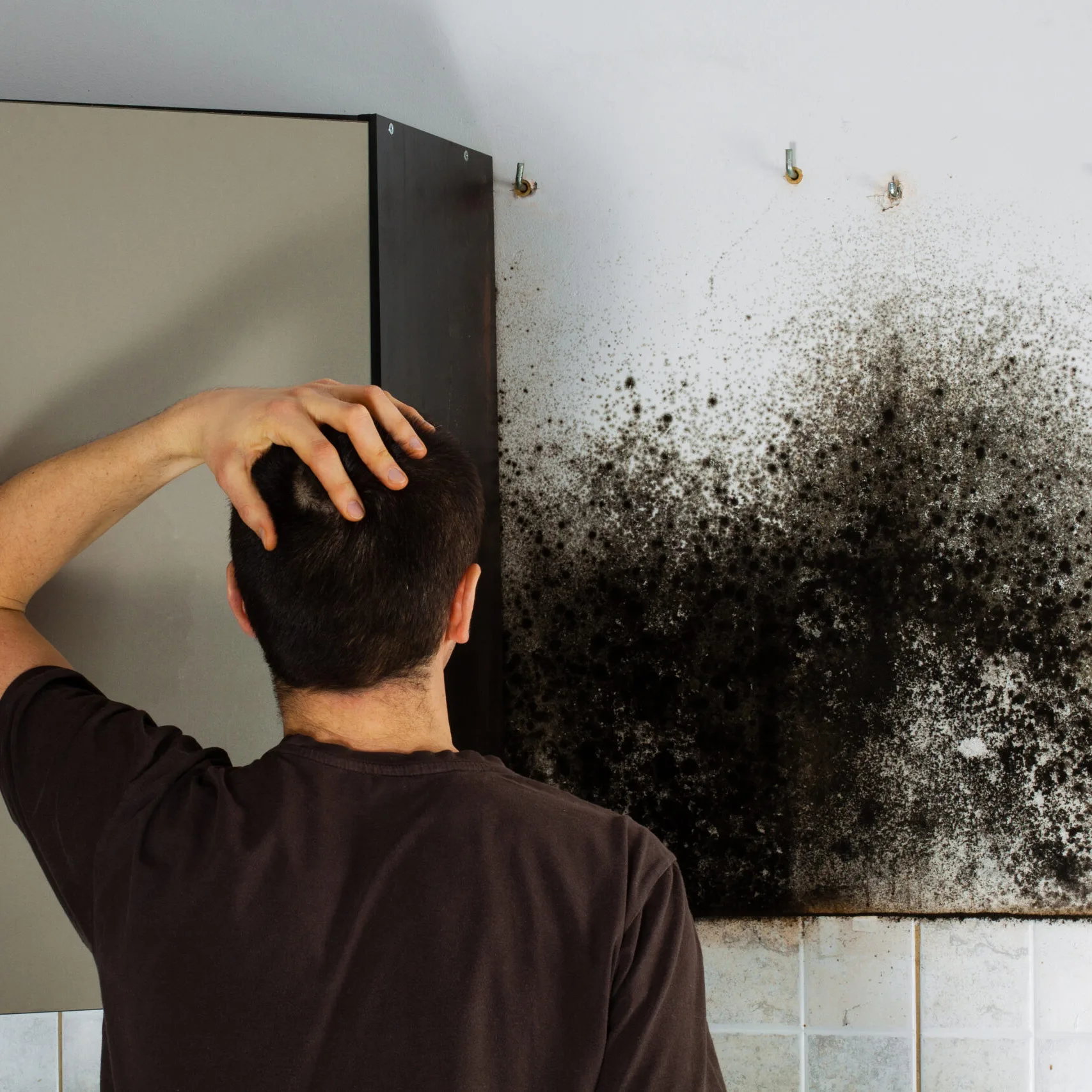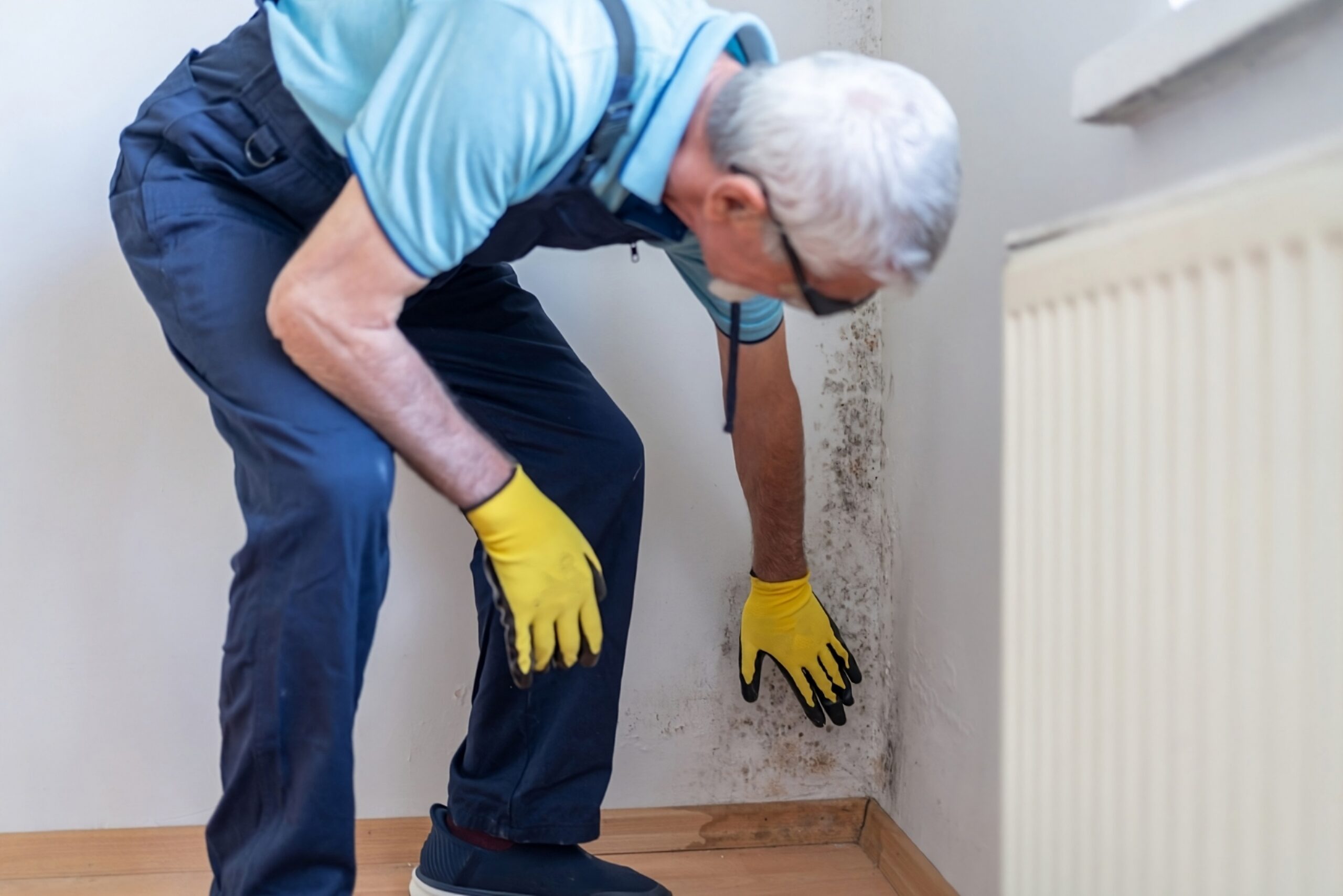If you’re in a rush, here’s the quick answer:
Dry-fog remediation atomizes an EPA-registered disinfectant into droplets smaller than 10 microns. Those particles behave like a gas: they drift through the entire volume of a room, seep behind baseboards, and fill stud bays without adding moisture. Each droplet carries an electrostatic charge that attracts mold spores, bacteria, and viruses, neutralizing them on contact. After a short dwell period, technicians ventilate the area and finish with HEPA filtration. Because no demolition or drying time is needed, most homes are safe to re-enter the same day.
Mold may be ancient, but the tools we use to fight it keep evolving. One method drawing a lot of attention is dry-fog mold remediation. Homeowners see the word “fog” and picture foggy windows, dripping walls, and soggy carpets. In reality, the process is closer to filling a room with microscopic snowflakes that vanish before they can even make a surface wet.
Below you’ll find a deep-dive guide that answers the internet’s most-searched questions about dry-fog treatment. It’s written for curious homeowners, so every section translates science into plain language. By the end, you’ll know whether this technology is the right fit for your own mold concerns and how to keep spores from creeping back after the crew packs up.
The Weak Spots of Traditional Mold Remediation

- Identify the visibly damaged drywall or flooring
- Cut the affected sections out and bag them
- Sand or wire-brush remaining wood framing
- Spray or wipe an antimicrobial coating
- Rebuild the torn-out sections
That sequence still has value because it physically removes heavily damaged material. But it also creates four pain points many owners don’t anticipate:
Dust Clouds
Cutting drywall releases gypsum dust and spores. Even if plastic sheeting is taped carefully, one wrong move with a shop-vac and spores drift into the HVAC system.
Moisture Issues
To remove mold, you must dry the structure. Yet rebuilding with wet lumber or high interior humidity can refresh the food source mold loves.
Long Downtime
When a wall is open, you’re looking at insulation replacement, drywall hanging, sanding, priming, and painting plus the cost of relocating furniture and family members while work drags on.
Higher Total Cost
Demolition means labor, debris hauling, and reconstruction. Even a small bathroom can turn into a multi-week renovation.
Dry fog neutralizes spores without ripping the building apart.
The Physics of a Ten-Micron Droplet
To understand why dry-fog works, picture two scenes:
Scene 1: A handyman pumps a trigger sprayer onto a baseboard. Droplets stick where they land but never reach inside the wall cavity.
Scene 2: A technician switches on a dry-fog device. A cool “smoke” pours out, but if you wave your hand through it, your skin stays dry. That mist drifts effortlessly through electrical outlets and around insulation baffles.
A ten-micron droplet (about one-tenth the thickness of a human hair) carries very little mass, so gravity hardly affects it. Brownian motion (tiny collisions with air molecules) keeps the droplet afloat long enough to contact airborne spores and porous surfaces. The disinfectant inside the droplet then disrupts the spore’s cell membrane, preventing it from reproducing.
Because the droplets are so small, they evaporate quickly. Your drywall never gets saturated, your carpets don’t squish, and electronics remain safe.
Step-by-Step Dry-Fog Mold Remediation
Let’s walk through a full project the way a professional crew does it.
Pre-Inspection and Moisture Mapping

Containment and Pressure Control
Clear plastic sheets (6-mil or thicker) are taped floor to ceiling. Doorways get zipper flaps for walk-in access. Air vents are covered to stop spores from entering ductwork. A negative-air machine (basically a giant fan with a hospital-grade HEPA filter) creates a slight vacuum, so any rogue particle moves into the containment zone, not into the rest of the house.
Here’s why negative pressure matters. Without it, fog could drift into the hallway, and spores released during prep would escape.
Pre-Fog Air Scrubbing
Before fogging, crews often run an air scrubber for 20–30 minutes. This step chops down the spore count.
First Fog Cycle
The technician starts the dry-fog generator. Depending on room size, it may run 5–15 minutes until visibility drops to near-zero. Everyone exits and seals the zipper. Inside, the mist swirls into light fixtures, penetrates fabric furniture, and rides convection currents into attic voids. The disinfectant typically needs 30–60 minutes of dwell time. During that window, spores, bacteria, and viruses are rendered inert.
Second Fog Cycle
In tougher jobs, techs may apply a second product that bonds to surfaces, forming a long-lasting antimicrobial barrier.
Post-Fog Ventilation
Fans or the home’s HVAC set to “ON” help clear residual vapor. Because the droplets evaporate fast, space can be re-entered in about an hour.
HEPA Detail Cleaning
While fog neutralizes spores, dead fragments still exist. A thorough HEPA vacuuming and microfiber wipe removes residues from floors, countertops, and vents. This step also knocks out dust, pollen, and other irritants — a bonus for allergy sufferers.
Final Verification
Technicians may perform post-clearance sampling or moisture checks to show conditions are back to normal. Some companies include a third-party lab report upon request, offering objective proof that remediation succeeded.
The Safety Profile of Dry-Fog Ingredients
Homeowners often ask, “If it kills mold, will it hurt my pets?” Reputable dry-fog products use hydrogen peroxide, peracetic acid, or ammonium salts at concentrations approved by the EPA for indoor environments. These break down into water and oxygen after their antimicrobial work is done. Even so, pets, houseplants, and people leave during treatment. Once the fog dissipates and fresh air cycles through, occupants can safely return.
Electronics, artwork, and raw wood surfaces remain unharmed because the mist adds virtually no moisture. It’s gentle enough for antique furniture yet potent enough for hospital operating rooms — settings where the technology first gained popularity.
Frequently Searched Questions About Dry-Fog Mold Remediation
How long will my house smell like chemicals?
Most clients notice a faint “clean” scent for a few hours post-treatment. By the next morning, the odor is usually gone.
Will dry-fog remove stains?
Fog kills spores but may not erase staining. Cosmetic discoloration sometimes needs a stain-blocking primer or light sanding once microbes are neutralized.
Can I stay in the house during the process?
For small zones, you can hang out in an unaffected area, but sensitive individuals often choose to step out for a few hours. Always follow the technician’s guidance.
Is dry-fog remediation guaranteed?
Companies vary, yet many provide a limited warranty or offer discounted retreatment if mold returns in the original area within a set timeframe, usually 6–12 months.
Comparing Costs: Dry-Fog vs. Demolition
While prices fluctuate by region and severity, here are some cost-related factors to weigh:
- Labor Hours – Dry-fog often finishes the same-day. Demolition plus rebuild can span a week or more.
- Material Disposal – Tear-out generates heavy debris that must be hauled and dumped. Fog treatments leave walls intact.
- Reconstruction – New drywall, texture, paint, and trim add up quickly. Fog eliminates this phase unless materials are too damaged to save.
- Business Disruption – For offices, every closed day carries lost revenue. A one-day fog job minimizes downtime.
In many cases, dry-fog’s higher chemistry cost is offset by drastically lower construction expenses and faster re-occupancy.
Ready to Clear the Air?
If you’re wrestling with recurring mold or want a less invasive alternative to rip-and-replace, dry-fog might be the ally you didn’t know existed. Understanding the science behind those ten-micron droplets helps demystify the process and empowers you to choose the best path toward a healthier home.
Stop letting mold dictate the health of your home. One quick call can put our dry-fog specialists on your doorstep.
Reach out to MoldGone and schedule your dry-fog remediation today.



